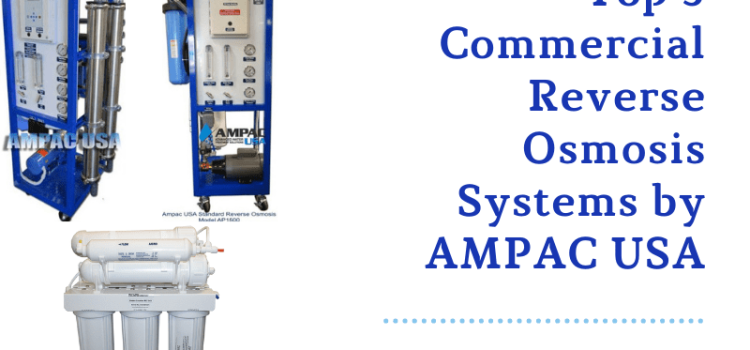Last updated on March 29th, 2025 at 12:36 pm
In an era where we cannot take water quality for granted, ultraviolet (UV) sterilization is a beacon of innovation and environmental responsibility. This cutting-edge technology offers a chemical-free solution to purify water, ensuring it is free from harmful microorganisms and safe for consumption. This guide aims to provide an in-depth look at UV sterilization, outlining its operation, benefits, and wide-ranging applications.
Fundamentals of UV Sterilization Technology
UV sterilization is a process that utilizes ultraviolet light to destroy the DNA of harmful microorganisms in water, including bacteria, viruses, and protozoa. This disruption prevents them from reproducing and causing infections, effectively neutralizing them. The process involves the passage of water through a chamber exposed to UV light, typically at a wavelength of 254 nanometers, which is known to be the most effective in DNA absorption.
Read: Water Purification Technologies: Ultrafiltration, Nanofiltration and Reverse Osmosis
Core Components of a UV Sterilization System
- UV Exposure Chamber: UV light exposes water in the vessel.
- UV Light Source: A specially designed lamp that emits the optimal spectrum of UV light.
- Control System: A sophisticated mechanism that ensures the UV lamp operates at peak efficiency, adjusting the intensity as needed.
The Advantages of UV Sterilization
Opting for UV sterilization brings forth numerous benefits, making it an attractive option for water purification:
- Chemical-Free Purification: It eliminates the need for chemical disinfectants, ensuring the water remains pure and unaltered in taste or smell.
- Low Energy Consumption: UV sterilizers are designed to be energy-efficient, offering significant cost savings over time.
- Broad-Spectrum Efficacy: This method is effective against virtually all pathogens, including chemical resistance.
Diverse Applications of UV Sterilization
The flexibility and efficacy of UV sterilization have led to its adoption in a variety of settings:
- Residential Water Purification: Providing households access to safe, clean drinking water.
- Industrial Wastewater Treatment: Ensuring that wastewater is adequately disinfected before being released into the environment.
- Aquaculture: Promoting the health of aquatic life by maintaining optimal water quality.
- Food and Beverage Industry: Utilized in the production process to ensure the microbial safety of products.
Implementing UV Sterilization: Best Practices
To maximize the benefits of UV sterilization, several key considerations should be made:
- Water Quality Assessment: It’s crucial to test the water for turbidity and other contaminants that may affect UV penetration. Pre-treatment options may be necessary to optimize efficiency.
- System Capacity Planning: The UV system must be sized correctly based on the water flow rate, ensuring all water is adequately treated.
- Maintenance and Care: Regular maintenance, including lamp replacement and chamber cleaning, is essential for sustained performance.
Read: Top 10 Reasons Why Purified Water Should Be Your Drink of Choice
UV Sterilization: A Closer Look at Its Effectiveness
How UV Light Neutralizes Pathogens
At the heart of UV sterilization is the UV light’s ability to penetrate the cells of microorganisms and alter their DNA. This alteration prevents the cells from performing vital functions, such as replicating. The efficiency of this process is influenced by several factors, including the exposure time and the intensity of the UV light.
The Role of Wavelength
UV sterilization is effectiveness mainly depends on the wavelength of the UV light. The 254-nanometer wavelength is considered optimal because it is absorbed by the DNA of microorganisms with the most excellent efficiency, leading to rapid inactivation.
Safety and Environmental Impact
One of the most compelling advantages of UV sterilization is its safety profile and minimal environmental impact. Unlike chemical disinfection methods, which can produce harmful by-products, UV sterilization is a clean process that does not alter the water’s chemical composition.
Future Perspectives on UV Sterilization
The continuous advancements in UV technology, including the development of more powerful and efficient UV lamps, are expanding the potential of UV sterilization. Innovations such as LED UV lamps offer promise for even lower energy consumption and longer lifespan, making UV sterilization more accessible and effective.
Read: How Seawater Desalination is Changing Lives?
Conclusion:
UV sterilization represents a significant step forward in our ability to ensure safe, clean water. Its combination of effectiveness, efficiency, and environmental friendliness makes it an indispensable tool in the ongoing effort to improve water quality worldwide. By embracing UV technology, we are not only safeguarding our health but also protecting the environment for future generations.
As we continue to face challenges related to water purity and conservation, UV sterilization stands out as a key technology that offers solutions. Its versatility and adaptability to different contexts and needs underscore its potential to revolutionize water treatment practices. By investing in UV sterilization, we are committing to a sustainable, healthy future, ensuring that clean water remains a fundamental right accessible to all.











